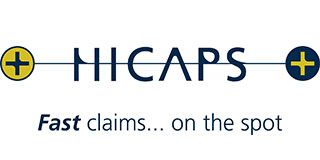Osteopathy for Iliotibial Band Syndrome ITBS
Treating Iliotibial Band Injury Naturally
Iliotibial Band Syndrome (ITBS) is a common overuse injury, particularly among runners, cyclists, and athletes.
It occurs when the iliotibial band—a thick band of connective tissue running along the outside of the thigh—becomes tight or inflamed, leading to pain on the outer knee or thigh.
Osteopathy offers a comprehensive, hands-on approach to treating ITBS by addressing both the local inflammation and the underlying biomechanical imbalances.
What is ITB Syndrome?
ITBS develops when the iliotibial band rubs excessively against the lateral femoral condyle (outer knee bone), especially during repetitive bending and straightening of the knee. This friction causes irritation and inflammation.
Contributing factors may include poor biomechanics, muscular imbalances, weak hip stabilisers, and improper footwear or training surfaces.

Common Symptoms of ITBS
- Sharp or burning pain on the outer side of the knee
- Discomfort that worsens with physical activity, especially running or descending stairs
- Tightness or tenderness along the outer thigh
- Swelling or a snapping sensation near the knee
- How Osteopathy Can Help Treat ITB Injury
Osteopathic treatment focuses on improving alignment, reducing inflammation, and correcting the mechanical dysfunctions that lead to ITBS.
Rather than only treating the site of pain, osteopaths assess the entire body to determine how posture, gait, and muscle function may be contributing factors to the issue.
Benefits of Osteopathy for ITBS

Soft tissue release: Hands-on techniques target tightness in the IT band, glutes, quadriceps, and surrounding fascia.
Postural correction: Addressing poor alignment and gait irregularities helps reduce friction and strain on the IT band.
Improved biomechanics: Osteopaths work to optimise hip, knee, and ankle mechanics to ensure smooth movement and load distribution.
Reduced inflammation and pain: Manual therapy enhances circulation and lymphatic drainage, thereby aiding in recovery.
Exercise and rehabilitation: Patients receive individualised advice on strengthening, stretching, and mobility exercises.
What to Expect During Osteopathy Treatment For Treating Iliotibial Band Syndrome

In your consultation, your osteopath will assess your movement patterns, joint mobility, muscle imbalances, and posture.
Treatment may include deep tissue techniques, joint mobilisation, stretching, and guided rehabilitation. A holistic plan will be developed to manage symptoms and prevent recurrence.
Book with Osteopathy Gold Coast at Chirn Park Health Group
If ITB Syndrome is interfering with your training, mobility, or comfort, osteopathic care can help alleviate the issue.
The experienced Southport osteopaths in Chirn Park Health Group are skilled in treating musculoskeletal injuries with a holistic and individualised approach.
Don’t let ITBS hold you back—contact our Osteopathy Gold Coast team today to book your consultation and begin your recovery journey.









